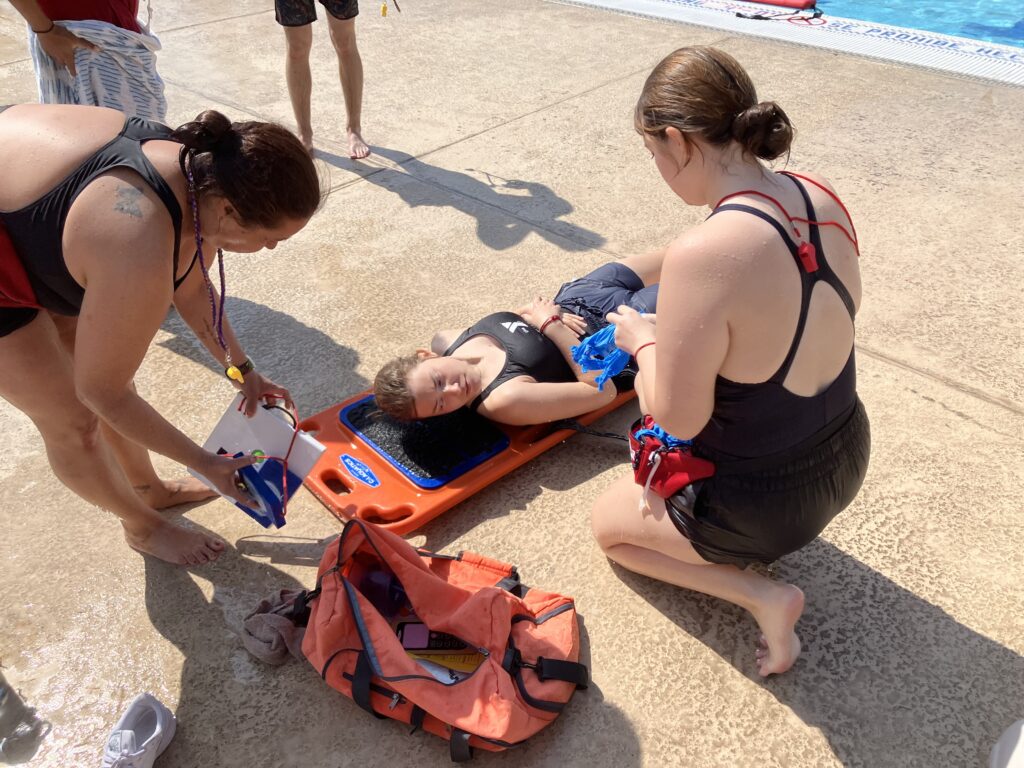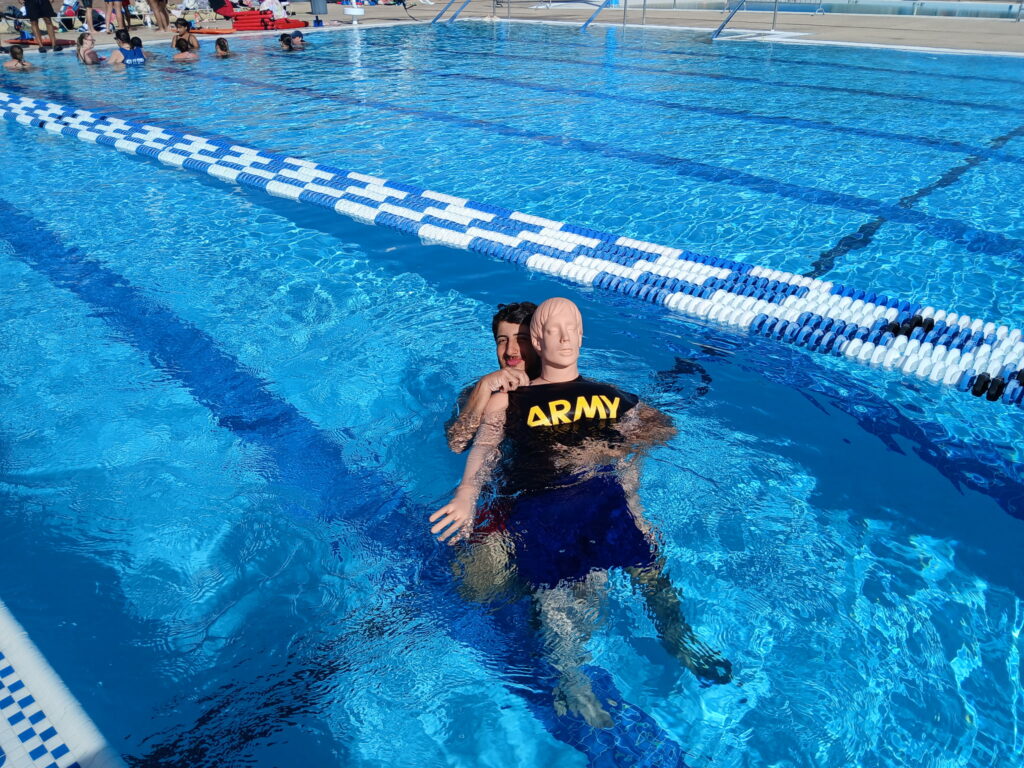Week 8: The Crossover is Complete
George S -
With the week complete, all lifeguards have been recertified and crossed over to v7.
We started the second day of class by hopping straight into the water for some conscious shallow water victim rescues and unconscious victim rescues floating in deep water. Afterwards we proceeded to go over unconscious rescues in shallow water with the victim being just under the surface.

Here we see an image of the lifeguards performing the unconscious rescue in shallow water with the victim being just under the surface. These rescues are performed in groups of 3, where there assigned to rescuer number 1, rescuer number 2, and victim.
Afterwards, to counter the physical demands of the training, we did the lifeguard exams and had a quick In-N-Out lunch break. The lifeguard exam, like the others, requires a 80% on each of it’s 7 sections to pass.
Then we went to our scanning drill and full scenario exams. Everyone would hop into the pool excluding one team of 4. In that team of 4 is Rescuer 1, who is responsible for initiating the EAP and beginning the rescue, Rescuer 2, who is responsible for taking coverage and clearing the pool, Rescuer 3, who is responsible for calling 911 and leading them to the scene, and Rescuer 4, who is responsible for assisting Rescuer 1 in extracting the victim and completing the rescue. Everyone else would hop into the pool and be given instructions on what to do. They may be told to go have fun and play, and then 2 people may begin fighting and one gets knocked out from a punch.
After the fun scenarios were over, we began our deep water extractions. In this scenario, I was responsible for setting up drowning chad. A full size human dummy who fills up with water and sinks to the bottom of the pool. Other lifeguard training associations, like the Red Cross, will have an actual person go down to the bottom of the pool to play victim, but that can be dangerous, which is why we only use the training dummy.

And to finish off the day, we did our spinal extractions. Once again in 3-man teams, everyone had to have a turn removing a conscious spinal victim from the water. It is a very long process that requires the utmost care to not compromise the spinal injury. If the victim were to be unconscious or not breathing, then the spinal would be considered compromised from the start and the rescuers would go straight to a speedboard extraction prioritizing life over limb. In v6, this was not the case; the rescuers would have still used the utmost care to extract the victim without compromising the spinal. Due to recent studies, we have now been able to classify an unconscious or non-breathing victim with a spinal injury as a compromised spinal from the start.
Hope you all enjoyed,

Comments:
All viewpoints are welcome but profane, threatening, disrespectful, or harassing comments will not be tolerated and are subject to moderation up to, and including, full deletion.